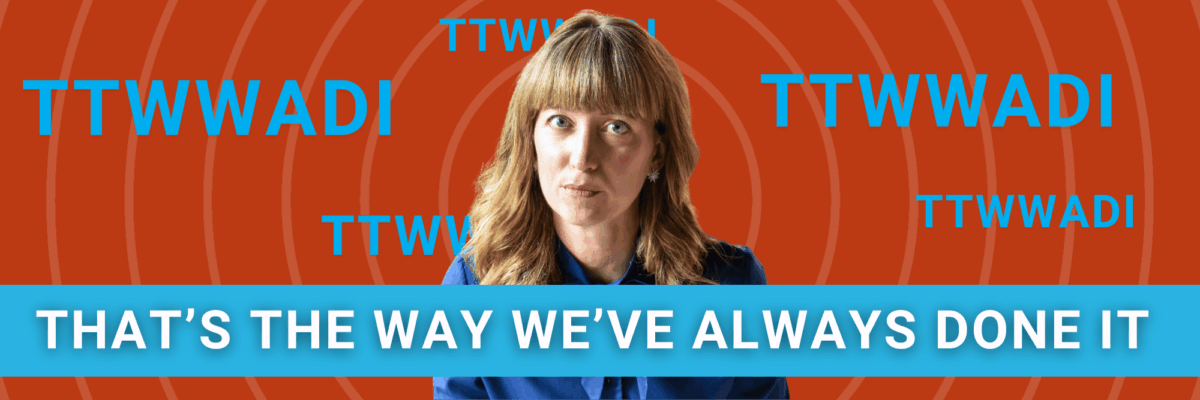TTWWADI
It was my first time at a major conference and I was at the information desk asking how to find the speakers’ room to double check that my slides were uploaded correctly. A young man approached me and said:
“I first saw you present five years ago and you changed my life.”
(Quick pause, gotta wipe the tear and put my heart back in my body.)
He continued “I want to attend your session later today. What room is it in?”
And, reader, he showed up later that day. One of those good head-nodders you always want in your audience.
Before I fired up my talk, we were chatting and he said he had a poster presentation accepted for this conference, I think it was about STD data, and that he had tried to create it in the Better Posters method.
When he ran this new poster design by his supervisor, Supervisor gave this young scientist a thumbs down and directed him to revert it back to the old, traditional, academic poster style, declaring “I’ve written 128 abstracts in my career and that’s the way we’ve always done it.”
That’s the way we’ve always done it.
Death to innovation.
That’s the way we’ve always done it.
Don’t rock the boat.
Quick question though: If the way you’ve always done it was effective, why is syphilis still on the rise?
That’s the way we’ve always done it is such a pat answer / lame excuse / stake into the heart of hope for change that it’s got an acronym – TTWWADI. Your pronounciation guide is tee-tee-wad-ee.
It’s more insidious than you’d think.
When I posted to LinkedIn about how our graph’s scales definitely do not always need to run 0-100%, I got this comment:
“The human brain has the 0-100 scale deeply embedded…”
Which obviously can’t be true, we aren’t born thinking about 0-100 on a graph’s scale. It’s just the result of doing science in certain cultures that are accustomed to their traditions.
“This is what people are used to seeing.” is just aka TTWWADI.
Customary doesn’t mean correct.
Tradition doesn’t make it true.
I’m also not saying to completely trash something just because of TTWWADI.
I’m saying that our long time practices are worth questioning.
When we hear someone say something akin to This is the way we’ve always done it, we should recognize that as an opportunity to pause and reflect.
If our practices hold up to honest scrutiny, hey Honey TTWWADI all day.
Questioning your long held beliefs and routines can be uncomfortable. That discomfort is worth bearing if we’re interested in actually getting it right, in making sure our data gets used to make a difference in the quality of life of the people we serve.
So the critical questions to ask your TTWWADI traditions are:
Has the way we’ve been doing it shifted the needle on the main problems we’re here to solve?
Who is our primary audience? Who are we organized to serve?
What is our organizational mission and vision?
Does this practice in question help us achieve our mission/vision and serve our primary audience?
Who are the immediate beneficiaries of the current way we’re doing things? How well does this align with who we are in business to serve?
Who do we need to reach to shift the needle more?
Are those people receptive to the traditional way we’ve been reporting our data?
What else is out there that could augment, supplement, or replace our current way of doing things?
I know change is hard. And I know you can do this.


